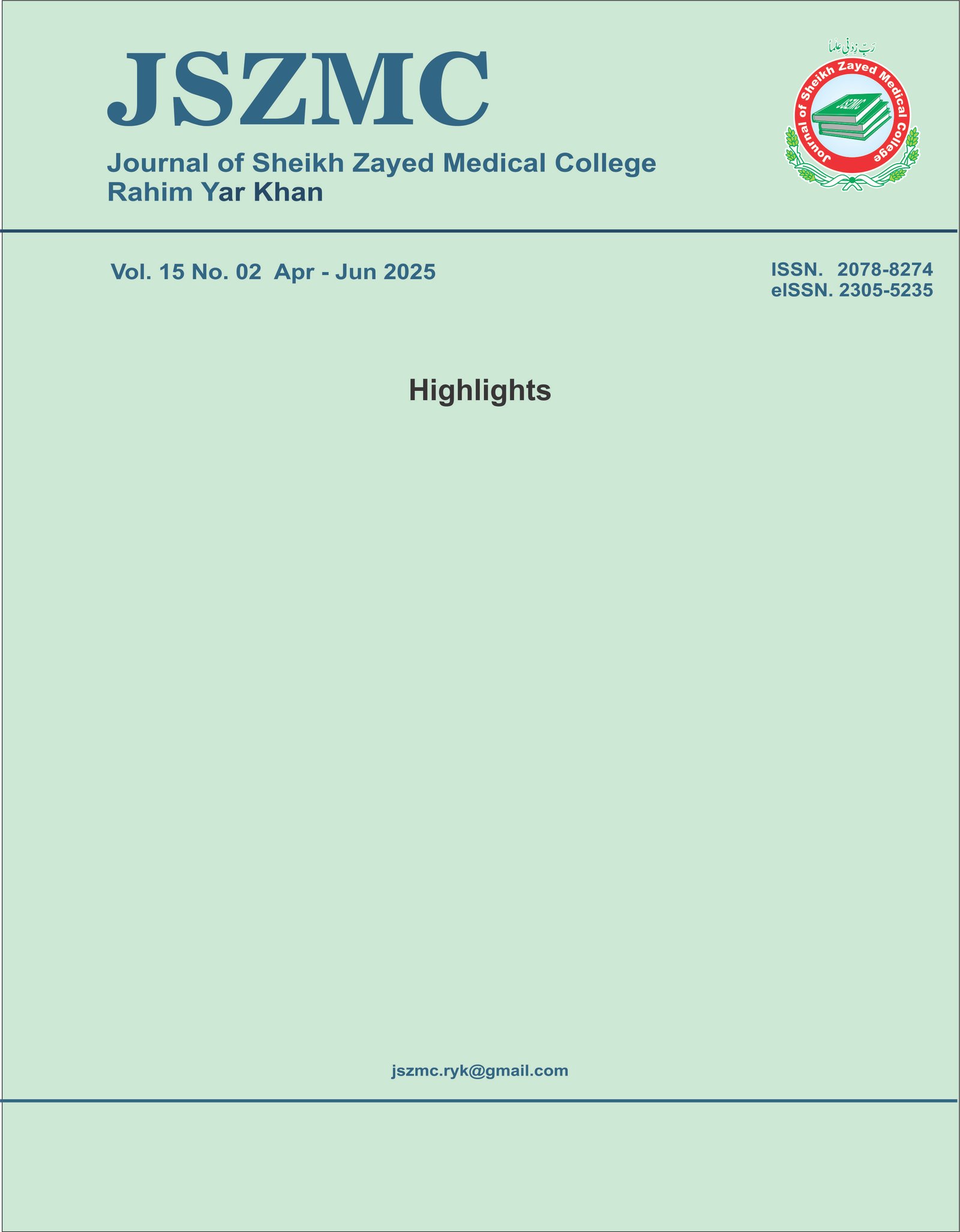Semaglutide Evolving Role: A Call for Broader Clinical Research in Pakistan
DOI:
https://doi.org/10.47883/jszmc.v15i02.306Keywords:
Cardiovascular outcomes, GLP-1 receptor agonist, Semaglutide, Type 2 diabetesAbstract
Diabetes mellitus is a chronic metabolic disorder and a growing global public health challenge, linked to numerous complications. According to the International Diabetes Federation (IDF) Diabetes Atlas, approximately 10.5% of adults (537 million people) were living with diabetes in 2021. This number is projected to increase to 11.3% (643 million) by 2030 and 12.2% (783 million) by 2045.1,2 Pakistan ranks third globally in diabetes prevalence, with 33 million cases reported in 2022 and projections reaching up to 70 million by 2045. The country also holds the highest global comparative diabetes prevalence at 30.8% (IDF, 2021).3 With rising obesity (BMI >25 kg/m²), the risk of type 2 diabetes increases sharply, and obesity-related diabetes is expected to affect 300 million people worldwide by 2025, highlighting the need for dual-targeted treatments.4
GLP-1 receptor agonists are a novel class of antidiabetic drugs that enhance insulin secretion, suppress glucagon, delay gastric emptying, and reduce appetite. They not only improve glycemic control and aid in weight loss but also show benefits for cardiovascular, renal, and metabolic health, with emerging potential in neurodegenerative diseases and certain cancers.5
Semaglutide was initially approved by the FDA for glycemic control in adults with type 2 diabetes mellitus (T2DM). Its notable weight reduction properties later led to a second FDA-approved indication for chronic weight management in both adults and adolescents.6 Following evidence of cardiovascular benefits, semaglutide received a third indication for reducing major adverse cardiovascular events (MACE) in adults with T2DM and established cardiovascular disease (CVD).7 More recently, the FDA approved semaglutide for slowing the progression of chronic kidney disease (CKD) and reducing cardiovascular death in patients with T2DM and CKD.8 Additionally, semaglutide has now been approved for the treatment of metabolic dysfunction-associated steatohepatitis (MASH) in patients with stage F2–F3 fibrosis.9
The efficacy of semaglutide in diabetes management, particularly in reducing body weight, HbA1c levels, and MACE, has been well established through the SUSTAIN and PIONEER clinical trials.10 Additionally, the STEP trial demonstrated that a 20% reduction in body weight achieved with semaglutide led to significant improvements in diabetes-related comorbidities.11 The FOCUS trial further highlighted the potential of semaglutide in addressing microvascular complications associated with diabetes.12 Similarly, the FLOW trial showed that semaglutide significantly reduced the risk of heart failure events and cardiovascular death in patients with T2DM and CKD.13 Beyond diabetic populations, findings from the SELECT trial indicated that semaglutide improved kidney function and reduced microalbuminuria in overweight or obese individuals without diabetes.14
In addition, emerging studies support the potential role of semaglutide in the management of several non-metabolic and metabolic conditions, including Non-alcoholic Fatty Liver Disease (NAFLD), Heart Failure, Polycystic Ovary Syndrome (PCOS), Obstructive Sleep Apnea (OSA), Alcohol Use Disorder (AUD), Alzheimer’s disease, Acute Ischemic Stroke, Non-diabetic Chronic Kidney Disease, and Obesity-related asthma.15
In Pakistan, semaglutide is primarily recognized for its dual role as an antidiabetic and anti-obesity agent. However, data regarding its broader therapeutic potential both in diabetes management and in other comorbid conditions remains limited and underexplored. Research on its efficacy and safety profile is scarce, largely due to the high cost of the drug in the past. With the recent availability of both oral and subcutaneous formulations, and the introduction of new generic brands leading to a price reduction of over 70%, semaglutide has become more accessible. This presents a timely opportunity to initiate local studies evaluating both forms of semaglutide and to explore its multifaceted clinical benefits in the Pakistani population.


